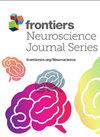An overview of systematic reviews of acupuncture for Parkinson’s disease
IF 3.2
3区 医学
Q2 NEUROSCIENCES
引用次数: 0
Abstract
BackgroundMany systematic reviews (SRs) have reported the efficacy of acupuncture in improving Parkinson’s disease (PD), but the quality of evidence is unknown. Therefore, it is necessary to comprehensively summarize and objectively evaluate the evidence of acupuncture for PD.MethodsSeven databases were searched to retrieve SRs on the acupuncture for PD. Two reviewers independently completed literature retrieval, screening, and data extraction. The methodological quality, risk of bias (RoB), evidence quality of the included SRs were assessed by the Assessing the Methodological Quality of Systematic Reviews 2 (AMSTAR 2), the Risk of Bias in Systematic Reviews (ROBIS), the Grading of Recommendations Assessment, Development and Evaluation (GRADE) tool.ResultsA total of 24 SRs were included. According to AMSTAR 2, 6 (25%) were rated as high quality, 6 (25%) were rated as moderate quality, and 12 (50%) were rated as very low quality. The application of the ROBIS tool showed that 12 (25%) SRs were at low risk of bias. The results of GRADE showed that 8 (7.62%) outcomes provided high quality evidence, 23 (21.9%) outcomes provided moderate quality evidence, 42 (40%) outcomes provided low quality evidence, and 32 (30.48%) outcomes provided very low quality evidence.ConclusionThe overview indicates that acupuncture shows promise as a treatment for PD, although the evidence is limited and inconclusive due to methodological flaws and the heterogeneity of existing studies. Future research should focus on fully reporting methodological details and following review guidelines to produce more reliable and consistent evidence on the effectiveness of acupuncture for PD.Systematic review registration针灸治疗帕金森病的系统综述
背景许多系统综述(SR)报道了针灸在改善帕金森病(PD)方面的疗效,但证据的质量尚不清楚。因此,有必要对针灸治疗帕金森病的证据进行全面总结和客观评价。方法检索了七个数据库,以检索有关针灸治疗帕金森病的系统综述。两名审稿人独立完成文献检索、筛选和数据提取。采用系统综述方法学质量评估2(AMSTAR 2)、系统综述偏倚风险(ROBIS)和建议评估、发展和评价分级(GRADE)工具对纳入的SR进行方法学质量、偏倚风险(RoB)和证据质量评估。根据 AMSTAR 2,6 篇(25%)被评为高质量,6 篇(25%)被评为中等质量,12 篇(50%)被评为极低质量。ROBIS 工具的应用表明,12 项(25%)SR 的偏倚风险较低。GRADE结果显示,8项(7.62%)结果提供了高质量证据,23项(21.9%)结果提供了中等质量证据,42项(40%)结果提供了低质量证据,32项(30.48%)结果提供了极低质量证据。未来的研究应注重充分报告方法学细节,并遵循综述指南,以获得更可靠、更一致的有关针灸治疗PD有效性的证据。系统综述注册https://inplasy.com,标识符为INPLASY202480049。
本文章由计算机程序翻译,如有差异,请以英文原文为准。
求助全文
约1分钟内获得全文
求助全文
来源期刊

Frontiers in Neuroscience
NEUROSCIENCES-
CiteScore
6.20
自引率
4.70%
发文量
2070
审稿时长
14 weeks
期刊介绍:
Neural Technology is devoted to the convergence between neurobiology and quantum-, nano- and micro-sciences. In our vision, this interdisciplinary approach should go beyond the technological development of sophisticated methods and should contribute in generating a genuine change in our discipline.
 求助内容:
求助内容: 应助结果提醒方式:
应助结果提醒方式:


